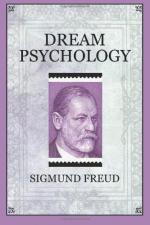In the most favorable case the development of pain terminates as soon as the energy has been withdrawn from the thoughts of transference in the Forec., and this effect characterizes the intervention of the principle of pain as expedient. It is different, however, if the repressed unconscious wish receives an organic enforcement which it can lend to its thoughts of transference and through which it can enable them to make an effort towards penetration with their excitement, even after they have been abandoned by the occupation of the Forec. A defensive struggle then ensues, inasmuch as the Forec. reinforces the antagonism against the repressed ideas, and subsequently this leads to a penetration by the thoughts of transference (the carriers of the unconscious wish) in some form of compromise through symptom formation. But from the moment that the suppressed thoughts are powerfully occupied by the unconscious wish-feeling and abandoned by the foreconscious occupation, they succumb to the primary psychic process and strive only for motor discharge; or, if the path be free, for hallucinatory revival of the desired perception identity. We have previously found, empirically, that the incorrect processes described are enacted only with thoughts that exist in the repression. We now grasp another part of the connection. These incorrect processes are those that are primary in the psychic apparatus; they appear wherever thoughts abandoned by the foreconscious occupation are left to themselves, and can fill themselves with the uninhibited energy, striving for discharge from the unconscious. We may add a few further observations to support the view that these processes designated “incorrect” are really not falsifications of the normal defective thinking, but the modes of activity of the psychic apparatus when freed from inhibition. Thus we see that the transference of the foreconscious excitement to the motility takes place according to the same processes, and that the connection of the foreconscious presentations with words readily manifest the same displacements and mixtures which are ascribed to inattention. Finally, I should like to adduce proof that an increase of work necessarily results from the inhibition of these primary courses from the fact that we gain a comical effect, a surplus to be discharged through laughter, if we allow these streams of thought to come to consciousness.




